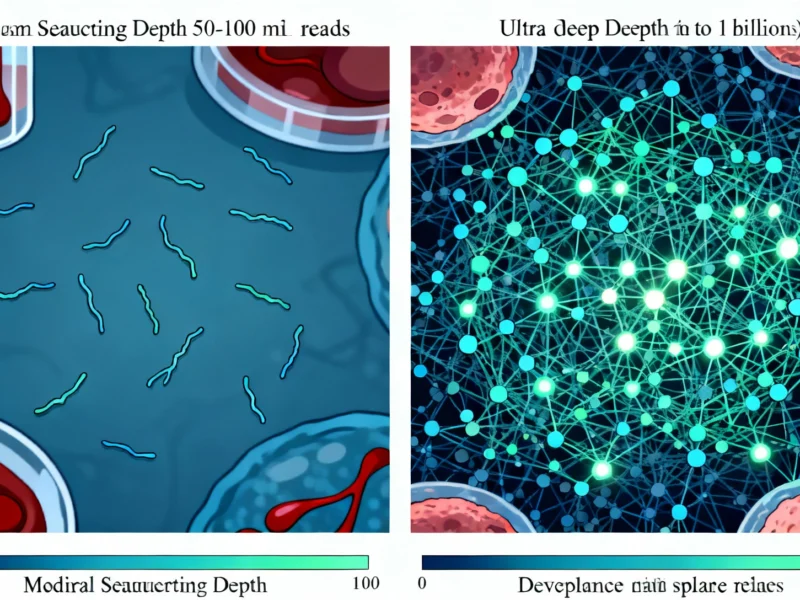Breakthrough in Genetic Disorder Diagnostics
Researchers have demonstrated the substantial benefits of ultra-deep RNA sequencing in diagnosing Mendelian disorders, according to a new study published in the American Journal of Human Genetics. The research team from Baylor College of Medicine’s Medical Genetics Multiomics Laboratory investigated how increasing sequencing depth from conventional levels to ultra-high depths could transform clinical diagnostics for genetic disorders.
Limitations of Current Diagnostic Approaches
Current RNA-seq diagnostic protocols typically use moderate sequencing depths of approximately 50-150 million reads, which sources indicate may fail to detect low-abundance transcripts and rare splicing events critical for clinical interpretation. These limitations are particularly problematic when dealing with variants of uncertain significance, analysts suggest, potentially leaving patients without definitive diagnoses.
Substantial Improvements with Ultra-Deep Sequencing
According to reports, the Baylor team utilized the Ultima Genomics platform to achieve sequencing depths of up to 1 billion reads, dramatically increasing detection capabilities. “With ultra-deep sequencing, we can evaluate many more low-expression genes that would be missed when sequenced at traditional sequencing depths,” said corresponding author Dr. Pengfei Liu, MGML director and associate professor of molecular and human genetics at Baylor College of Medicine.
Clinical Implications for Tissue-Specific Genes
The enhanced detection capability proves particularly valuable for genes causing developmental and neurological disorders that may not be strongly expressed in commonly tested blood and skin samples. The report states that ultra-deep sequencing enables researchers to capture genes traditionally considered tissue-specific, even from blood samples. This breakthrough could significantly improve diagnostic rates for conditions that have previously been challenging to diagnose through standard approaches.
New Tools for Future Research
Researchers have created an online resource using their deep RNA-seq data that estimates the required sequencing depth needed to achieve genetic diagnosis. According to the study published at Elsevier, the tool can also predict pathogenic abnormal gene splicing from deeply sequenced healthy people data, providing valuable insights for future research and clinical applications.
Translation to Clinical Practice
The Baylor team indicates they will next perform clinical validation for ultra-deep RNA-seq and plan for a clinical test based on their findings. “In the MGML, we are leaders in translating new genomic technologies into real-world clinical practice,” Liu stated. The researchers continue to evaluate new technology that can help improve diagnostic rates for patients with suspected genetic disorders.
Broader Implications and Future Directions
This research comes amid other technological advancements across various sectors, including reports of unexpected stock performances in technology companies and developments in virtualization software as VMware adopts new versioning approaches. Additionally, the healthcare technology sector continues to evolve alongside other industries, with companies like Samsung making strategic supply chain decisions that parallel the innovation seen in genetic research.
The study represents a significant step forward in genetic diagnostics and demonstrates how technological advancements in sequencing depth can uncover previously undetectable genetic information crucial for patient diagnosis and care.
This article aggregates information from publicly available sources. All trademarks and copyrights belong to their respective owners.



